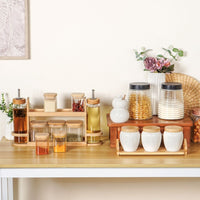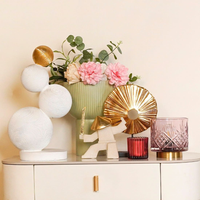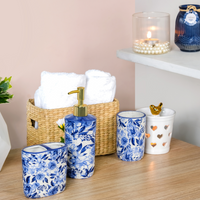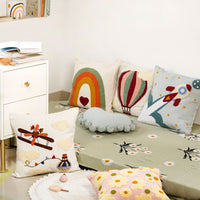Arranging furniture is more than just finding a place for your pieces; it's about creating a functional and visually appealing space that suits the size and shape of your room. Whether working with a cosy apartment or a spacious living area, mastering the art of furniture arrangement can truly transform your home. In this blog, we'll explore various layout options tailored to different room dimensions. From maximising space in small rooms to creating a sense of balance in larger spaces, we'll provide expert tips and inspiration to help you design your ideal living environment. Join us as we delve into the world of furniture arrangement and discover how strategic placement can enhance the flow, functionality, and aesthetics of any room.
Also visit: https://nestasia.in/collections/soft-furnishings

Furniture Layout For Different Rooms
1. For Living Room
-
The room's measurements will dictate how far you can pull your furniture away from the walls, but even in a small space, you’ll want to give pieces a little breathing room by allowing a few inches between the backs of furniture pieces and the walls.
-
The TV should be placed in an area of your living room that is not affected by sunlight or glare from natural or other lighting.
-
People should naturally be able to talk to each other without crushing their necks or shouting across the room. Position the sofas and chairs to face each other (not necessarily straight on, but close), and so they are close enough that people can converse without raising their voices.
-
Every seat should have easy access to either a side table or a coffee table. Avoid layouts that force people to move from their seats to put down or retrieve their drinks.
Also visit: https://nestasia.in/collections/home-decor

2. For Bedroom
-
Bedrooms come in varying shapes, from squares to long rectangular and irregular layouts in older homes that may include sloping ceilings and alcoves. Start by deciding the best placement for the bed so that it is easy to access. Depending on the layout, this may be anchored against a far wall or coming out from a side wall.
-
Make sure that there is a clear pathway to the bed and furniture from the main bedroom door. In a primary bedroom with an en suite bathroom, be sure that the bathroom entrance is unobstructed. Work around architectural elements like windows when considering furniture placement and decor such as art and mirrors.
-
Consider room size when choosing how much furniture to include. A small bedroom may only have the space for a bed and wall-mounted nightstands and lighting. A medium-sized room may include room for a dresser or an armchair, while a larger primary bedroom can include a lounge space with a small loveseat or a pair of armchairs in front of a fireplace.
-
Consider whether the bedroom will be used exclusively for sleeping; will require a desk for studying or working from home; or is large enough to include a reading nook or a lounge space with a TV. If the room is devoted to sleeping, make the bed the focal point, choosing the largest and most comfortable size available.

3. For Kitchen
-
Before proceeding with the kitchen layout and the kitchen furniture, decide on the place for the placement of the fridge, hob, and sink. Once this is done, you can go ahead with your planning of the kitchen furniture.
-
The gap between the counter height and the kitchen furniture is an important point when designing the kitchen furniture. The difference should not be more otherwise the purpose to work conveniently will not be served. Further, it will cause inconvenience to people with average height to work in a kitchen where things are kept at some height.

4. For Study Room
-
When square footage is limited, built-in elements become essential for injecting rhythm and personality. Utilising a stunning book wall can break up the expanse and infuse visual interest into your study room design.
-
Knowledge unfolds best in an atmosphere of inner calm. Walls adorned in sage green form a calming backdrop, while rich mahogany furniture with polished surfaces gleaming with understated refinement anchor the space.
-
Elevate your home study room design beyond the standard desk and chair to create secondary seating areas. Placing a cosy daybed in a sun-soaked corner or a custom window seat bathed in natural light, equipped with comfortable cushions and ambient lighting, becomes a refuge for focused reading, email catch-up, or quiet contemplation.
-
Instead of swallowing floor space in your study room design, install a sleek wall-mounted desk.

Conclusion
In the ever-evolving world of interior design, the art of arranging furniture is a dynamic and exciting process. With our comprehensive guide to different room sizes, you will gain valuable insights into how to maximize space, enhance functionality, and create visual interest in your home. By understanding the unique characteristics of your room and considering factors such as traffic flow, natural light, and focal points, you can unlock the full potential of your home and design a space that reflects your personality and lifestyle.
Also visit: https://nestasia.in/collections/furniture




















